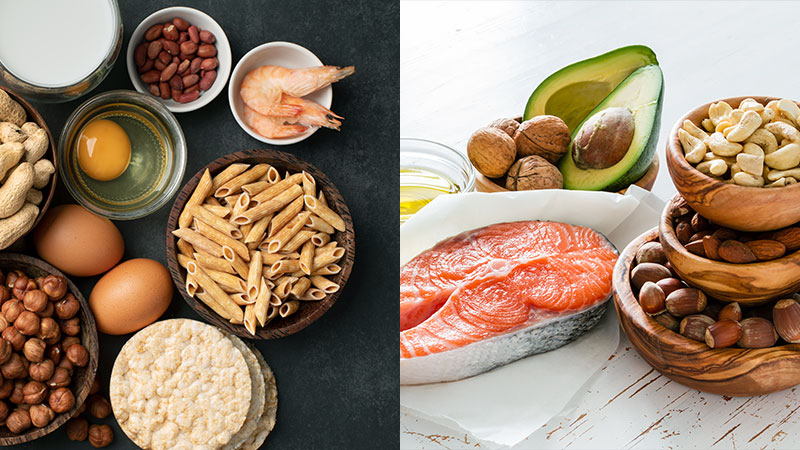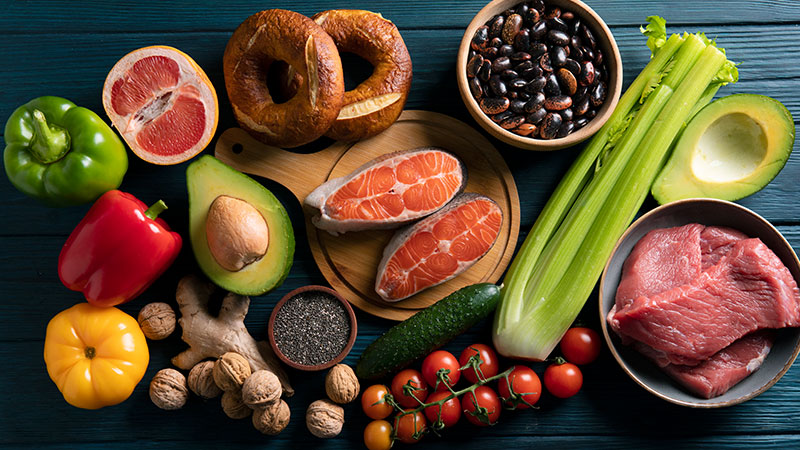In the world of nutrition, fats often get a bad rap, but they’re essential for a balanced diet. The key lies in understanding the difference between saturated and unsaturated fats.
These two types of fats play distinct roles in our health, influencing everything from cholesterol levels to heart disease risk.
Saturated fats, typically found in animal products and some tropical oils, can raise LDL cholesterol levels, potentially leading to cardiovascular issues.
On the other hand, unsaturated fats, present in foods like avocados, nuts, and olive oil, are known to support heart health by improving cholesterol profiles.
Deciphering the impact of these fats on your body can empower you to make healthier dietary choices.

What Is Saturated Fat?
Fats are composed of carbon, hydrogen, and oxygen. Saturated fats have only single bonds between their carbon molecules, making them tightly packed with hydrogen atoms and solid at room temperature, as seen in butter and coconut oil.
These fats are found in various foods such as butter, lard, coconut oil, palm oil, red meat, heavy cream, and cheese.
Although high-fat foods may contain different types of fats, they are classified by their saturation level.
Different types of saturated fats, like short, medium, long, and very long-chain fatty acids, have varied health impacts, with short and medium chains being metabolized differently compared to long chains.
What Is Unsaturated Fat?
Unsaturated fats feature one or more double bonds between carbon molecules. They differ from saturated fats, which lack these bonds.
These fats contribute to heart health by improving cholesterol levels and reducing inflammation.
Sources of unsaturated fats include olive oil, avocados, and nuts, whereas saturated fats are commonly found in animal products like butter and red meat. Balancing these fats is essential for optimal health.
Saturated Fat

Saturated fats play a significant role in diets and are often debated due to their health implications.
Common Sources of Saturated Fat
Saturated fats are found primarily in animal products and certain oils. Butter, lard, and coconut oil are common examples.
Animal-based sources include red meat, heavy cream, and cheese. Plant-derived options, such as palm oil, also contribute to saturated fat intake.
These fats remain solid at room temperature due to their chemical structure, consisting entirely of single bonds between carbon molecules.
Health Impact of Saturated Fat
Consuming high levels of saturated fat can raise LDL cholesterol levels. Elevated LDL levels are linked to a higher risk of heart disease. The chemical structure of saturated fats contributes to plaque buildup in arteries.
Different types of saturated fats, including short, medium, and long-chain fatty acids, impact health differently.
For instance, long-chain fatty acids are more likely to raise cholesterol compared to medium-chain fatty acids. Balancing saturated fat intake with other types of fats can support heart health.
Daily Saturated Fat Intake Recommendations
Health authorities, like the American Heart Association, advise limiting saturated fat intake. They recommend that saturated fats make up less than 10% of daily calories.
For someone consuming 2,000 calories a day, this translates to about 22 grams. Reducing saturated fat intake can be achieved by substituting it with unsaturated fats, like those found in olive oil, nuts, and fish.
Maintaining awareness of saturated fat content in foods aids in making healthier dietary choices.
Unsaturated Fat

Unsaturated fats play a crucial role in maintaining heart health. These fats contain one or more double bonds between carbon molecules, which contribute to their liquid state at room temperature.
Types Of Unsaturated Fat: Monounsaturated And Polyunsaturated
Unsaturated fats are categorized into monounsaturated and polyunsaturated fats. Monounsaturated fats (MUFAs) feature a single double bond, found in foods like olive oil, avocados, and certain nuts.
Polyunsaturated fats (PUFAs) contain multiple double bonds, present in fish, flaxseed, and walnuts. Both types are essential for reducing bad cholesterol (LDL) and improving heart health.
Common Sources Of Unsaturated Fat
Various foods provide unsaturated fats. Monounsaturated fats are abundant in olives, avocados, and nuts. Polyunsaturated fats are rich in fatty fish, flaxseeds, and sunflower oil.
Including these sources in meals enhances overall nutrient intake and supports cardiovascular health.
Health Impact Of Unsaturated Fat
Incorporating unsaturated fats in diets offers numerous benefits. These fats lower LDL cholesterol, reducing the risk of heart disease.
They also help raise good cholesterol (HDL) levels, which protect against arterial plaque buildup. Essential fatty acids found in polyunsaturated fats contribute to brain health and cell function.
Daily Unsaturated Fat Intake Recommendations
Health experts recommend a balanced intake of unsaturated fats. The American Heart Association suggests consuming most fats from sources like fish, nuts, and vegetable oils.
While specific guidelines vary, aiming for a mix of MUFAs and PUFAs can optimize heart health. Prioritizing these fats within the daily recommended calorie intake ensures a balanced and heart-healthy diet.
Comparing Saturated vs Unsaturated Fat

Understanding how saturated and unsaturated fats differ can guide healthier eating choices.
Key Differences
Saturated fats have a chemical structure featuring single bonds between carbon atoms. This structure makes them solid at room temperature.
Common sources include butter, lard, and red meat. Conversely, unsaturated fats contain one or more double bonds, which results in a liquid state at room temperature. These are found in olive oil, avocados, and nuts.
Another difference lies in their impact on cholesterol levels. Saturated fats tend to raise LDL cholesterol, which can lead to heart disease.
In contrast, unsaturated fats help lower LDL cholesterol and raise HDL cholesterol, providing heart health benefits.
Health Implications
Saturated fats can elevate LDL cholesterol levels, increasing the risk of heart disease. The American Heart Association recommends limiting saturated fat intake to less than 10% of daily calories, about 22 grams for a 2,000-calorie diet.
On the other hand, consuming unsaturated fats can reduce the risk of heart disease. They play a role in lowering bad cholesterol (LDL) and raising good cholesterol (HDL).
Health experts suggest incorporating a mix of monounsaturated and polyunsaturated fats from sources like fatty fish, olives, and flaxseeds into daily diets for optimal heart health.
How to Reduce Saturated Fat in Your Diet?

Reducing saturated fat in your diet is essential for enhancing heart health and maintaining overall wellness. Implement these effective strategies to minimize saturated fats:
Choose Lean Cuts of Meat
Select lean cuts such as skinless chicken, turkey, or lean beef like sirloin or tenderloin, as they contain less saturated fat compared to fattier cuts.
Substitute Poultry or Fish for Red Meat
Increase your consumption of poultry (without the skin) and fish, particularly fatty fish like salmon, mackerel, or trout, which are rich in heart-healthy omega-3 fatty acids, to decrease saturated fat intake.
Trim Visible Fat from Meat
Remove any visible fat from meat and skin from poultry before cooking to reduce saturated fat content.
Use Healthier Fats
Opt for unsaturated fats such as olive oil, avocado oil, or canola oil instead of butter, lard, or shortening in cooking and baking, as these healthier fats can help lower cholesterol levels.
Opt for Low-Fat or Fat-Free Dairy
Choose low-fat or fat-free milk, yogurt, and cheese to cut down on saturated fat intake.
Limit Processed and Fried Foods
Avoid processed meats like sausages, hot dogs, and bacon, which are high in saturated fats. Instead, choose grilled or baked alternatives and favor cooking methods like baking, grilling, steaming, or roasting over frying to reduce fat content in meals.
Read Food Labels
Examine nutrition labels for saturated fat content, especially in processed and packaged foods, to make informed dietary choices.
How to Incorporate More Unsaturated Fat?

Incorporating more unsaturated fats into your diet is a heart-healthy choice that can easily be achieved by making a few adjustments to your daily meals. Here are several ways to do so:
Add Avocados
Avocados are abundant in monounsaturated fats and enhance salads, sandwiches, and smoothies. Additionally, they serve as an excellent toast spread and provide a creamy foundation for dressings.
Cook with Olive Oil or Canola Oil
Use oils high in monounsaturated fats, such as olive oil or canola oil, for sautéing, baking, or making dressings. These oils are optimal for cooking at medium heat and offer a flavorful, healthier substitute to butter or margarine.
Eat Fatty Fish
Include fatty fish such as salmon, mackerel, sardines, or tuna in your diet at least twice a week. These fish are high in polyunsaturated fats, especially omega-3 fatty acids, which promote heart health.
Snack on Nuts
Nuts such as almonds, walnuts, pistachios, and cashews are rich in healthy unsaturated fats. Consuming a small handful of these nuts as a snack or incorporating them into dishes like salads, oatmeal, or yogurt can enhance your intake of beneficial fats.
Include Seeds
Flaxseeds, chia seeds, sunflower seeds, and hemp seeds are excellent sources of unsaturated fats. Add them to cereal, smoothies, or yogurt, or include them in baked goods for an additional nutritional enhancement.
Try Nut Butters
Nut butters such as almond, peanut, or cashew butter are efficient sources of unsaturated fats. These can be spread on whole-grain toast or apple slices or blended into smoothies to achieve a creamy, rich texture.
Replace Saturated Fats with Unsaturated Fats
Replace foods high in saturated fats with those containing unsaturated fats. For instance, opt for olive oil-based salad dressings instead of creamy ones, and select plant-based spreads over butter or lard.
Frequently Asked Questions
Why are fats essential in a balanced diet?
Fats are crucial for energy, cell growth, protecting organs, and absorbing certain vitamins. They provide essential fatty acids that the body can’t produce on its own. Including healthy fats in your diet supports overall health and well-being.
Which foods are rich in saturated fats?
Common sources of saturated fats include butter, lard, coconut oil, red meat, heavy cream, and cheese. These fats should be consumed in moderation to maintain a healthy diet.
How can I reduce saturated fat intake?
To reduce saturated fat intake, choose lean cuts of meat, trim visible fat, opt for poultry or fish, use olive oil instead of butter, and select low-fat dairy products. Baking, broiling, or grilling instead of frying also helps.
What are the recommendations for saturated fat intake?
Health authorities, such as the American Heart Association, recommend limiting saturated fat intake to less than 10% of daily calories. For a 2,000-calorie diet, this is approximately 22 grams of saturated fat.
How do unsaturated fats help heart health?
Unsaturated fats help heart health by lowering bad cholesterol (LDL) and raising good cholesterol (HDL). This reduces the risk of plaque buildup in arteries and overall heart disease.
Conclusion
Understanding the differences between saturated and unsaturated fats is crucial for making informed dietary choices.
While saturated fats can raise LDL cholesterol and increase heart disease risk unsaturated fats improve cholesterol levels and reduce inflammation.
By following expert recommendations to limit saturated fat intake and incorporate more unsaturated fats individuals can significantly enhance their heart health.
Practical dietary changes such as choosing lean meats using olive oil and adding nuts and avocados to meals can make a substantial impact. Embracing these healthier fat options supports overall well-being and promotes a balanced diet.
